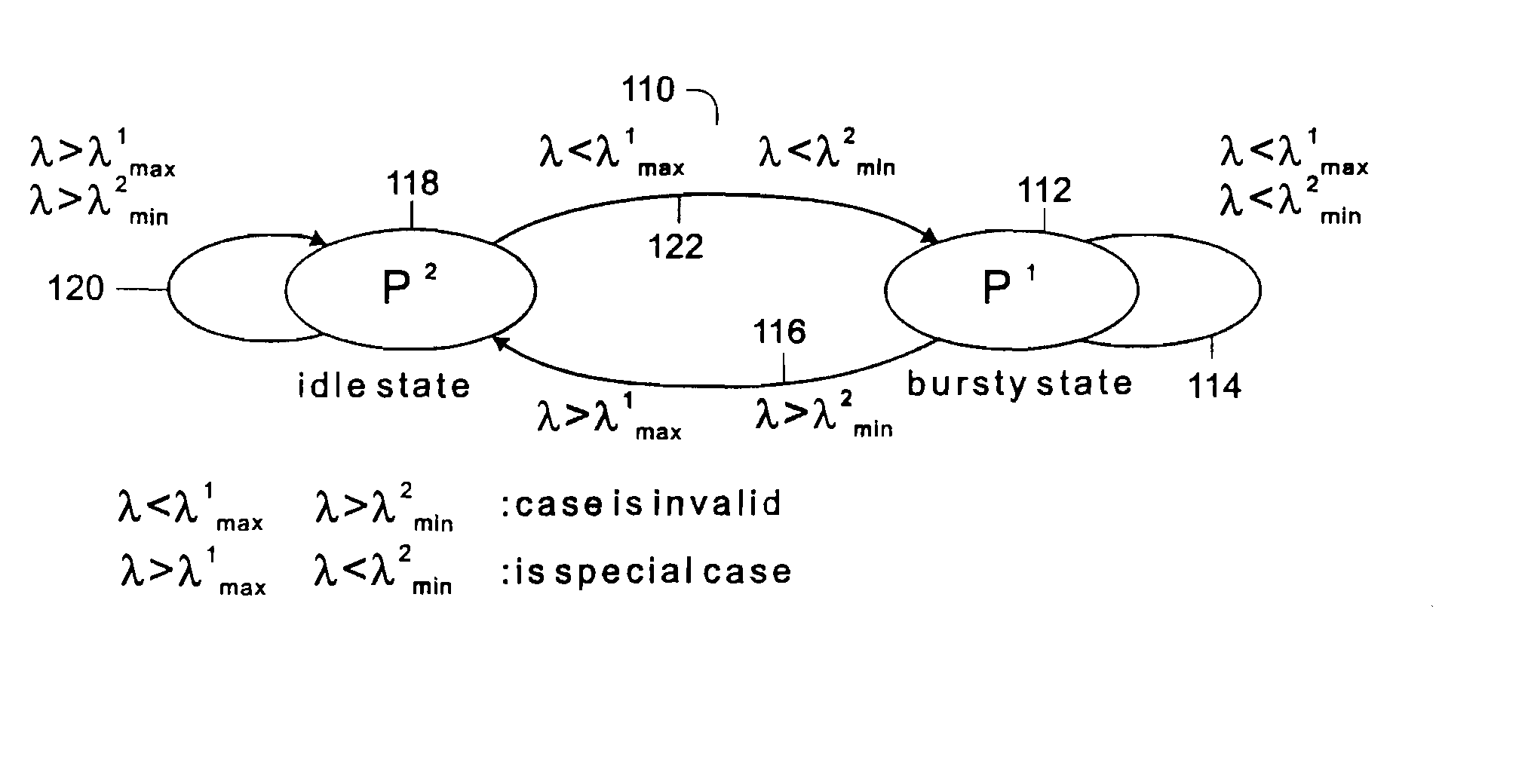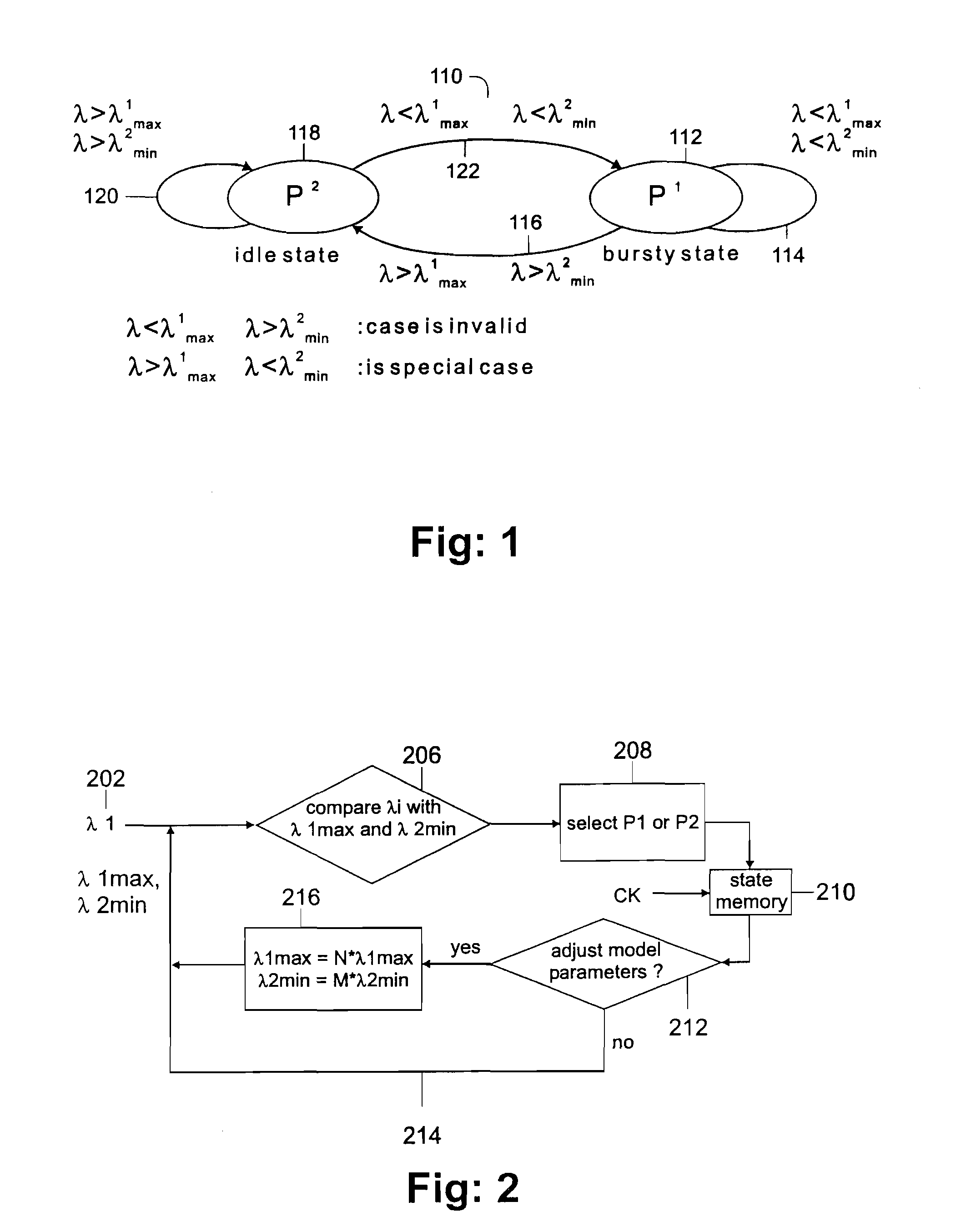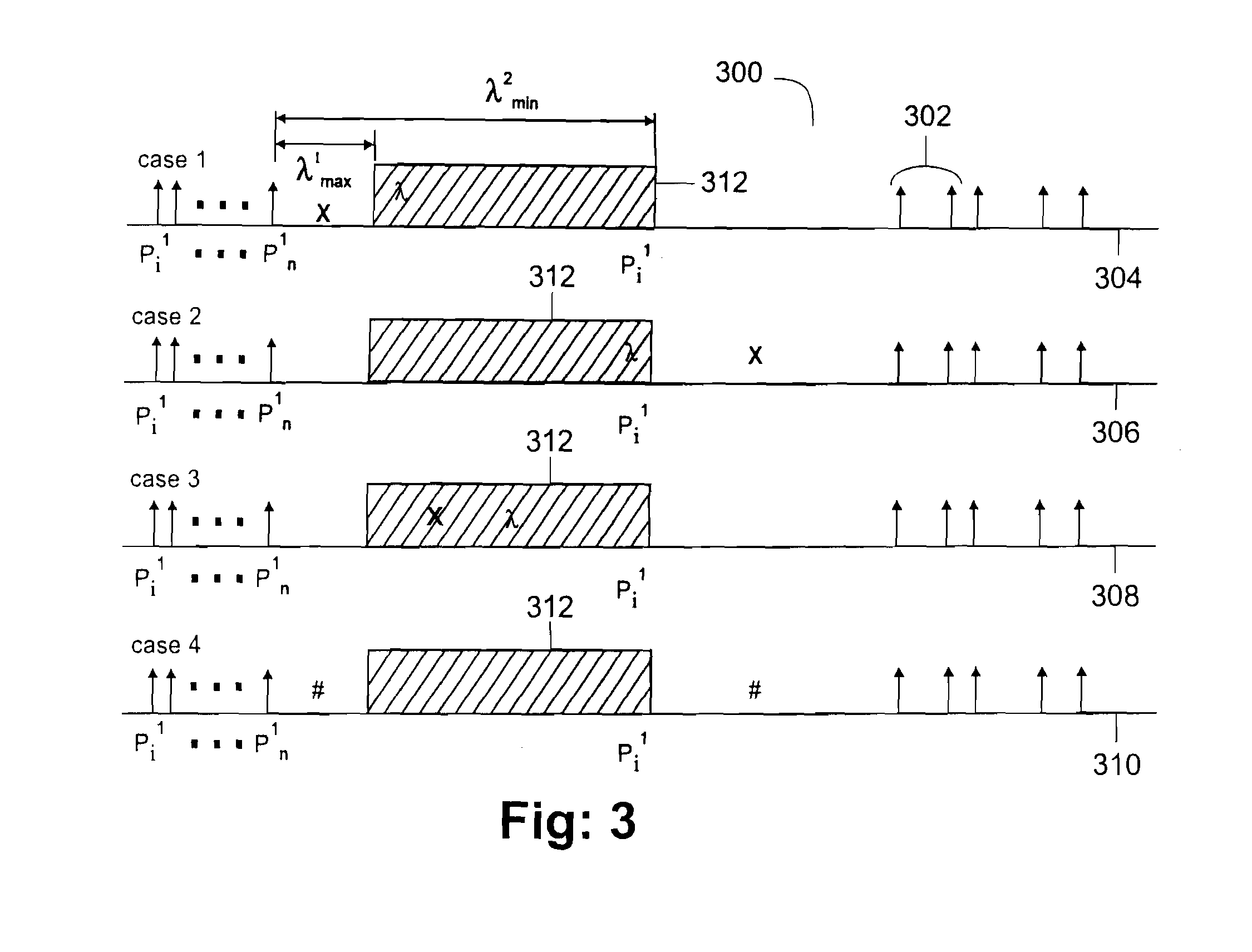Mmpp analysis of network traffic using a transition window
a network traffic and transition window technology, applied in the computer field, can solve the problems of synchronization use that can directly affect the latency of the receive operation and the utilization of the host computer processor, add to the cost of synchronization with excessive latency, and reduce the dependence on human intervention, the effect of flexible dynamic algorithms
- Summary
- Abstract
- Description
- Claims
- Application Information
AI Technical Summary
Benefits of technology
Problems solved by technology
Method used
Image
Examples
case 1
[0030] Case 1. λi1max2min: Pi is detected to belong to burst state P1.
case 2
[0031] Case 2. λi>λ2min>λ1max: Pi is detected to belong to idle state P2.
case 3
[0032] Case 3. λ1maxi2min: Pi is detected to be inside of the transition window [λ1max, λ2min] In this case, the next state transition which is selected is dependent upon the user process requirements. As will be shown, this method can be applied to improve the performance of the network attached devices. In particular, application of the transition window approach to manage the synchronization process in low-latency, high-bandwidth networks will be shown.
PUM
 Login to View More
Login to View More Abstract
Description
Claims
Application Information
 Login to View More
Login to View More - R&D
- Intellectual Property
- Life Sciences
- Materials
- Tech Scout
- Unparalleled Data Quality
- Higher Quality Content
- 60% Fewer Hallucinations
Browse by: Latest US Patents, China's latest patents, Technical Efficacy Thesaurus, Application Domain, Technology Topic, Popular Technical Reports.
© 2025 PatSnap. All rights reserved.Legal|Privacy policy|Modern Slavery Act Transparency Statement|Sitemap|About US| Contact US: help@patsnap.com



